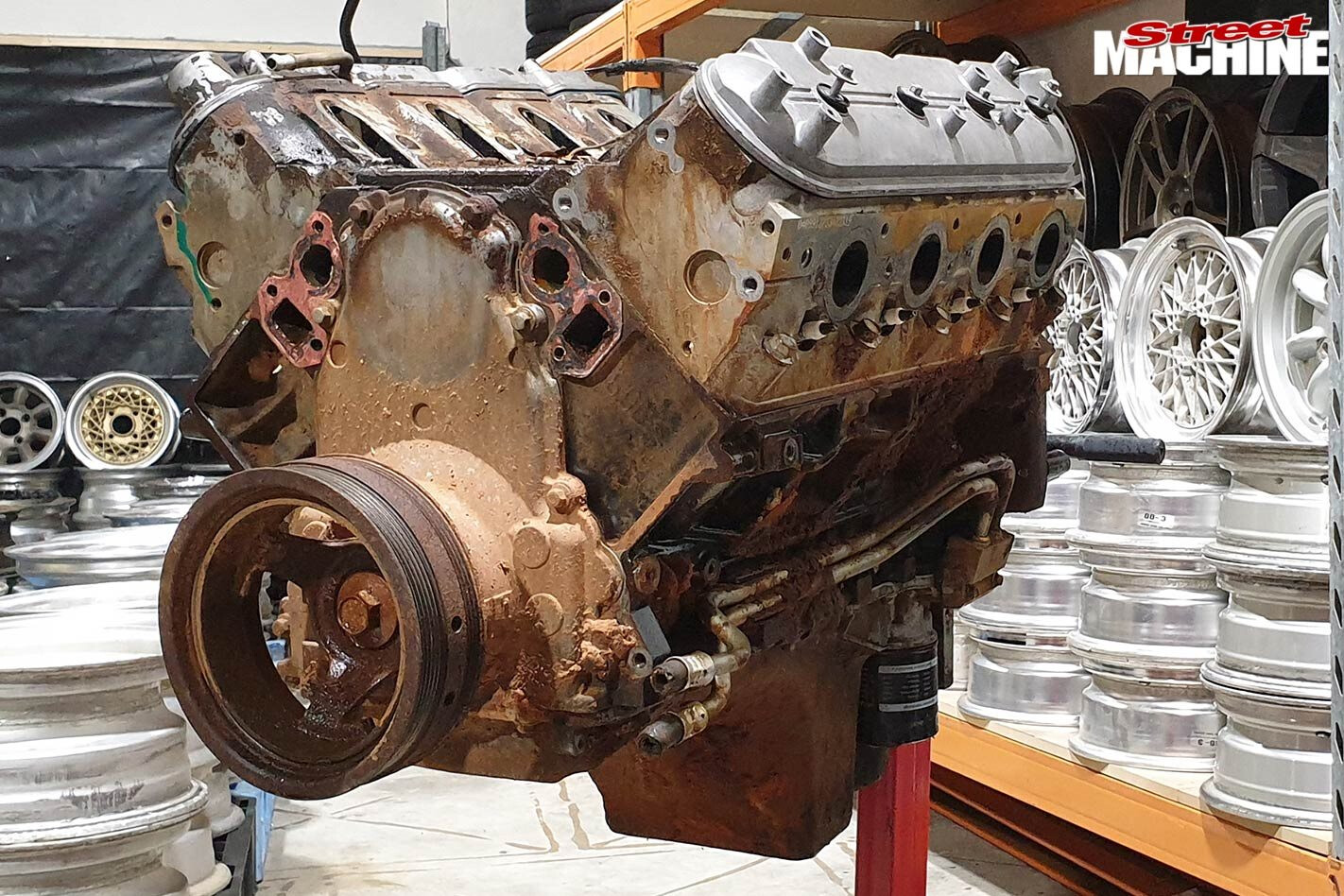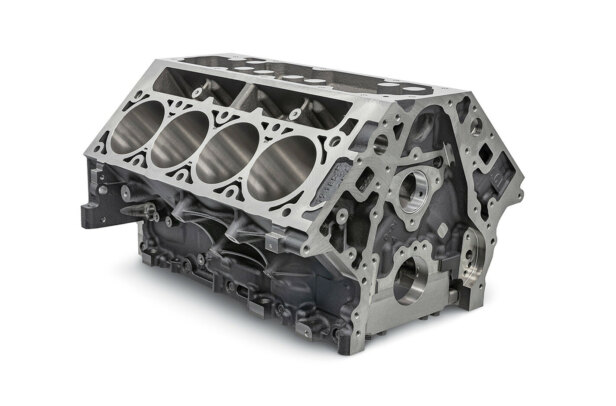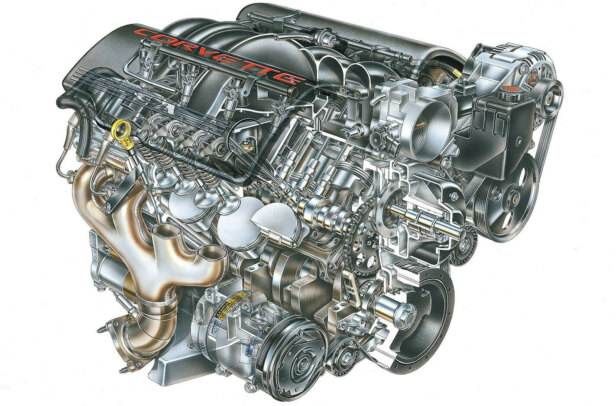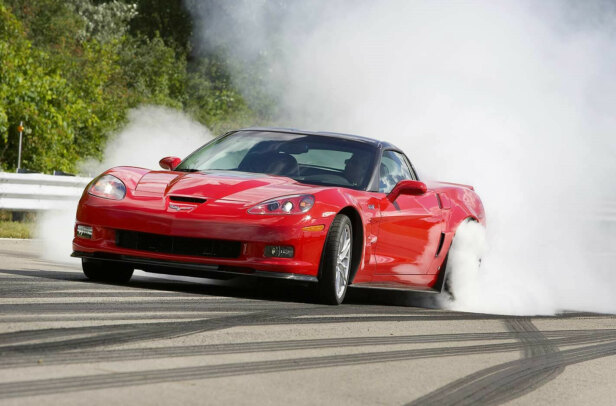WHILE most people know about the high-performance variants of the LS engine family tree, there are nearly 40 different motors all hanging out under the broader LS moniker. There are differences in drive layout, bore sizing, iron/alloy construction, cylinder head port shape, oiling, fuel and ignition systems, and plenty more.
This article was first published in Street Machine’s LSX Tuner magazine #9, 2019
Street machiners have latched onto the iron-block LS variants thanks to the rise in popularity of the Stock Bottom-End (SBE) builds and Sloppy Mechanics, where it was discovered that iron-block LS V8s take to turbocharging and ethanol fuels like ducks to water. We’ve seen over 1500hp out of a stock iron 6.0-litre rotating assembly, with cars running into the sevens overseas using cammed junkyard motors.
Iron blocks are roughly 50kg heavier than passenger aluminium LS blocks, but can be bored further. Part of the attraction of these motors is larger-capacity car internals fit the truck motors.
While the 6.0-litre truck motors are regarded as the most desirable for big power, GM also made 4.8L and 5.3L capacity engines, which helps with making sure your turbo V8 is able to get past engineering requirements.
But how do you tell your LM7 from your LQ4? We’ve got the skinny on the LS “truck” family tree below, divided up by bore size and engine generation.
One reason iron LS blocks are so popular is their amazing availability. General Motors made millions of pick-ups, vans and trucks which they have jammed these engines into, meaning you’ll literally trip over iron LS motors in US junkyards. Huge supply affects the cost of the engines and means they’re generally offered at an absolute bargain-basement price
GEN III
3.78in BORE
LR4
Also known as the Vortec 4800, it is an iron truck motor designed to replace the 305-cube 5000 L30. It is the smallest Gen III truck/SUV motor and makes 255hp (190kW) for the circa 1999-2000 edition, 270hp (201kW) from 2001-04, and 285hp (213kW) from 2005-06. It’s found in 1999-2006 Chevy Tahoe/GMC Yukon, Silverado/Sierra and Express/Savana models.
LM4/LM7/L33/L59
The Vortec 5300 engine had several variants over its life, being known as the LM4, LM7, L33 and L59. The stroke is 9mm over the Vortec 4800 and from that point on there are lots of differences. The L33 is also known as the Vortec 5300 HO. It is an aluminium-block variant of the iron LM7 with flat-top pistons from the 4.8L LR4, a higher-lift cam, higher compression ratio and LS6 cylinder heads, making 310hp (235kW). The #799 cylinder heads are reportedly the same casting as the LS6 and LS2 #243 heads, minus hollow exhaust valves and high-performance valve springs. The LM4 is another aluminium-block variant of the LM7, making 290hp (216kW) and is not as high-performance as the L33. It was used in the Chevrolet SSR, GMC Envoy and other light-duty models. The L59 is the flex-fuel version of the LM7 found in 1999-2007 Avalanches, Silverados, Sierras, Yukons, Tahoes and Escalades. It makes 270hp (201kW) in 1999 form, 285hp (213kW) in 2000-03 and 295hp (220kW) in 2004-07.
You can ID the 4.8s and 5.3s as opposed to other iron LS blocks thanks to the 4.8/5.3 casting mark on the front of the block. There is no other easy way to ID whether you’re looking at a 4.8 or a 5.3 short of pulling a cylinder head and measuring the stroke
4in BORE BLOCKS
LQ4/LQ9
The Vortec 6000 came in two specifications, with the LQ4 making 300hp to 360hp (220-268kW) and the LQ9 making 345hp (257kW). The LQ4 is found in GMC Yukons and Sierras, Hummer H2s, and Chevy Suburbans, Silverados and Expresses. The LQ9 is the high-output version of the LQ4, originally designed for Cadillac Escalade models. It has flat-top pistons to increase compression ratio to 10:1. It was also used in the Silverado SS and Denali models. These engines are highly popular given deep-breathing LS3-style heads can be fitted for bulk turbocharged power.
Above: This LQ4 6.0-litre iron block was picked out of a South Carolina junkyard for under US$1000. Featuring 9.4:1 compression ratio, it is a Gen III motor and runs a 24-tooth reluctor wheel. While the outside is so packed with dirt it looks like it has been used as a bulldozer at some point, the internals are in good shape. In 1999-2000, LQ4s came with #373 or #873 heads that had 71cc chambers, cathedral ports and 200cc intake runners with oval exhaust ports. From 2001-07 LQ4s were fitted with the cathedral-port, 210cc intake, #317 or #035 heads that had D-shaped exhaust ports
GEN IV
In 2005, after eight years, the Gen III made way for the heavily revised Gen IV-series small-block. Rather than radically re-engineering the platform, Chevrolet evolved the basic architecture to push the displacement as far out as 7011cc (427 cubic-inches), while also including new technology like fly-by-wire throttles, displacement on demand and variable valve timing.
3.78in BORE BLOCKS
LY6
The LY6 is a 6.0-litre Gen IV Vortec truck motor which replaced the LQ4, however, it boasts variable valve timing. It is fitted to 2007-onwards Chevy Silverados and Suburbans, and GMC Sierras and Yukons. Due to its smaller bore size it cannot use the high-performance LS3 rectangle-port heads.
LFA/LZ1
Launched in 2008, the LFA is an all-aluminium Vortec V8 and was fitted to GM hybrid GMT900 trucks and SUVs, including Tahoe, Yukon, Escalade, Silverado and Sierra models. The LFA features 10.8:1 compression and makes 332hp (248kW). It was only offered in 2008 and 2009 models. A heavy revision of the LFA, the all-aluminium LZ1 truck and SUV motor, features upgraded fly-by-wire throttle, new oiling system, AFM and variable valve timing while still pumping out 332hp (248kW). It was again offered in 2010-13 Tahoe, Yukon, Escalade, Silverado and Sierra GMT900 hybrid trucks and SUVs.
If the truck engines have a drawback it is that their camshafts generally have as much lift and duration as a broomstick. Budget-conscious kilowatt fans building a forced-induction LS should look to the factory LS9 cam upgrade as the 211/230/122.5 specs are the best GM ever offered in a blown engine
LY2/L20
First launched in 2007 in GMC and Chevy trucks, the 4.8L Vortec 4800 LY2 replaced the Gen III LR4 and is the smallest member of the Gen IV family. The iron-block V8 is also the only Gen IV truck and SUV motor not to feature variable valve timing. It makes between 260-295hp (194-220kW) depending on application. The Vortec 4800 L20 is an iron-block Gen IV variant of the LY2, but is equipped with variable valve timing on both intake and exhaust. It does not feature AFM and makes 260-302hp (194-225kW).
LH6/LH8/LH9/LC9
The LH6 is a Gen IV Vortec 5300 5.3L V8 truck/SUV motor with AFM technology and is the aluminium variant of the LY5. It produces 315hp (235kW) and can be found in 2005-09 TrailBlazers, Envoy Denali, XL and XUVs, Buick Rainiers, Saab 9-7Xs, Silverado 1500s and Sierra 1500s. Vortec 5300 LH8s making 300hp (220kW) were fitted to 2008-10 Hummer H3 SUVs and 2009-12 Colorado pick-ups, featuring a different sump layout to suit the GMT345 and GMT355 truck engine bays, but without AFM. The Vortec 5300 LC9 is a four-wheel drive fitment, flex-fuel-ready Gen IV making between 315hp (235kW, in pick-ups) and 320hp (239kW in SUVs). It has been fitted to 2007-onwards Avalanches, Silverados, Suburbans and Sierras. Variable valve timing has been added to the LH6 and LC9 post-2010.
Most Street Machine readers can identify the “bunch of bananas”-style LS car intake manifolds, but the truck and SUV intake manifolds are taller as they feature longer intake runners. They might not look as good, but they do help produce excellent torque figures
LY5/LMG
The LY5 is an iron-block Vortec 5300 engine that replaced the Gen III LM7 engine in 2007. SUV fitments produce 320hp (239kW) while pick-up truck fitment engines make 315-320hp (235-239kW). The LMG is the same as the LY5 except it is the flex-fuel variant. LY5 and LMG engines are found in 2007-onwards Avalanches, Silverados, half-tonne Suburbans, Tahoes, Sierras and Yukons. After 2010 these engines both scored variable valve timing, though the LMG does not feature AFM.
4.06in BORE BLOCK
L92/L9H/L94
From 2007 the Cadillac Escalade featured the new Vortec 6200 L92, the 6.2L all-aluminium V8. Featuring two-stage variable valve timing, it produces 403hp (301kW) and was also found in GMC Sierra Denali and SLT and GMC Yukon, plus export model H2 Hummers, Silverado and Tahoe LTZ. In 2009 the L92 was modified for flex-fuel capability and renamed the L9H, while it was again renamed to L94 when AFM technology was added in 2010.
PICK A WINNER
Working out if the bargain motor you’ve found is a Gen III or Gen IV is relatively easy. To start with, Gen IV motors – by and large – all feature electronic throttlebodies, while Gen III engines use cable-operated throttles.
Don’t stress if you’re looking at a bare long motor as there are a couple of generational signatures to these engines that are almost impossible to fudge.
Gen III cam sensors are found at the back of the block, while the Gen IV’s is cast into the front timing cover. The crank sensor is also different between Gen III and IV, even though it is found in the same position on the block. Gen IIIs run a black sensor and 24-tooth trigger wheel, while the later Gen IV crank sensors are grey and 58-tooth.
HEAD STRESS
| CASTING NUMBERS | ENGINE FAMILY | VALVE IN/EX | CHAMBER CC |
| CATHEDRAL-PORT | |||
| 241 | LS1 | 2.00/1.55 | 67cc |
| 243/799/823 | LS1/LS6 | 2.00/1.55 | 65cc |
| 706/862/895 | LM4/LM7/LR4 | 1.89/1.55 | 61cc |
| 853/806/933 | LS1 (perimeter) | 2.00/1.55 | 67cc |
| RECTANGULAR-PORT | |||
| 317/035 | LQ4/LQ9 | 2.00/1.55 | 71cc |
| 373/873 | LQ4 | 2.00/1.55 | 71cc |
| 364/716/823 | L92/LS3 | 2.165/1.59 | 68cc |
| 452 | LS7 | 2.20/1.61 | 70cc |
BORE/STROKE
| Capacity | Bore/stroke (inches) |
| 4807cc/293ci | 3.78/3.27 |
| 5328cc/325ci | 3.78/3.62 |
| 5665cc/346ci | 3.89/3.62 |
| 5967cc/364ci | 4.00/3.62 |
| 6.2L/376ci | 4.065/3.62 |
| 7.0L/427ci | 4.125/400 |




Comments